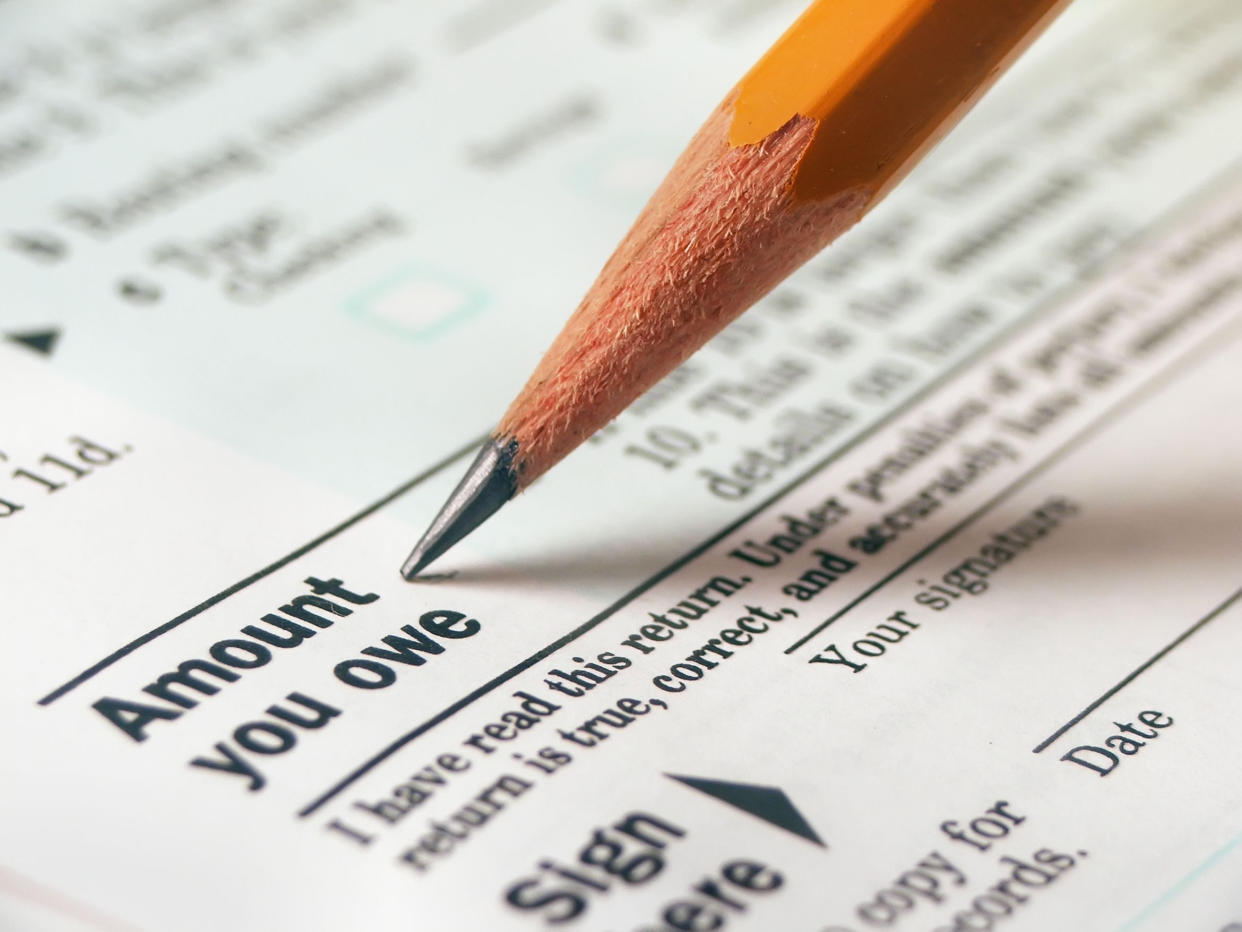Owe the IRS? Here are 4 ways to pay your tax bill

Paying taxes is like eating your vegetables. Maybe even worse.
Luckily, there are ways to make the payment process more manageable as the tax deadline looms. But not all methods are created equal, and some may require processing or service fees on top of the tax bill you owe.
Here are four ways to make your tax payments to the IRS — plus some advice if you can't pay.
And, of course, be sure to take action before the tax deadline to avoid any penalties and interest.
Transferring money directly from your bank account
You can access the electronic process through your e-file software or through the "Direct Pay" function on the IRS portal. In general, the date you submit the payment request is considered the date you paid your taxes. But the actual fund withdrawal can take up to two business days to process.
For payments made through your tax prep software, you can file and submit tax payments and choose the bank account for the debit.
The IRS Direct Pay portal will guide you through five steps to pay for taxes if you choose this option. Be sure to have prior year return(s) and Social Security numbers handy because the IRS uses them to verify your identity.
Remember to save the confirmation number for each payment you make as a reference, regardless of which electronic payment method you choose.
Credit/debit cards
You can use your cards to make tax payments online, by mobile device, or over the telephone.
Only IRS-approved third-party vendors can facilitate this payment option — but there’s a convenience fee associated with such services. Accepted payment methods differ depending on the three providers, but they all accept Visa, Mastercard, Discover, American Express, Paypal, and Click to Pay.
The three companies that the agency works with — payUSAtax, Pay1040, and ACI Payments — charge a flat fee between $2.20 and $2.50 for consumer debit cards and a percentage charge for credit cards ranging between 1.85% and 1.98%. Make sure to check the fees, because paying with a credit card on a $5,000 tax bill, for instance, can cost you up to $99. These fees can also reduce or eliminate any benefit you get from earning credit card rewards.
Check or money order
What if you want to pay an old-fashioned way?
You can write a check or money order in the amount of your tax liability and mail it in an envelope with the form voucher corresponding to the tax return — such as the 1040-V, the voucher form for individual tax returns (Form 1040, 1040-SR, or 1040-NR). Fill out your name, Social Security number, address, and the tax balance due on the vouchers for accurate processing. The balance shown on the voucher should also match the enclosed check or money order.
The IRS has some administrative guidelines for sending a check, including making the payment to the "United States Treasury." (And do not staple the checks to the voucher!) Make sure to check the rules for an efficient submission.
Finally, you should confirm where to mail your check and voucher. Each state and type of payment have designated IRS offices. Payment vouchers usually include the IRS offices' addresses in their instructions, but you can also check the IRS website for this information.
Pro tip: Mail your payment with a certified tracking number for peace of mind — and a paper record. Still, the IRS suggests considering alternative electronic payment methods that are safer, quicker, and easier.
Cash
You can only pay your tax liability in-person at any of the nation's 7,000 participating retail partners, according to the IRS website.
Participating stores include:
-
Dollar General
-
Family Dollar
-
CVS Pharmacy
-
Walgreens
-
Pilot Travel Centers
-
7-Eleven
-
Speedway
-
Kum & Go
-
Royal Farms
-
Go Mart
-
Kwik Trip
You can also check this map for participating locations.
But before you head out with some cash, you need to register your payment information on either ACI Payments ($1.50 service fee per payment) or Pay1040.com ($2.50 service fee per payment). Once registered, the processor will email you a barcode that you can take to a vendor and make the payment in person.
If you can't pay
If your tax obligation is more than you can afford, the IRS offers several installment payment plans. In the worst-case scenario, you may be able to settle the tax debt for less than what you owe if you can prove paying it would create a severe financial burden. More details about these options can be found here.
Rebecca is a reporter for Yahoo Finance and previously worked as an investment tax certified public accountant (CPA).
Click here for the latest personal finance news to help you with investing, paying off debt, buying a home, retirement, and more
Read the latest financial and business news from Yahoo Finance
Source: Read Full Article


